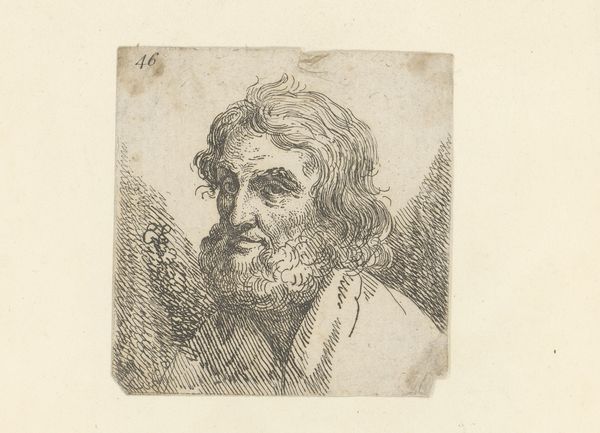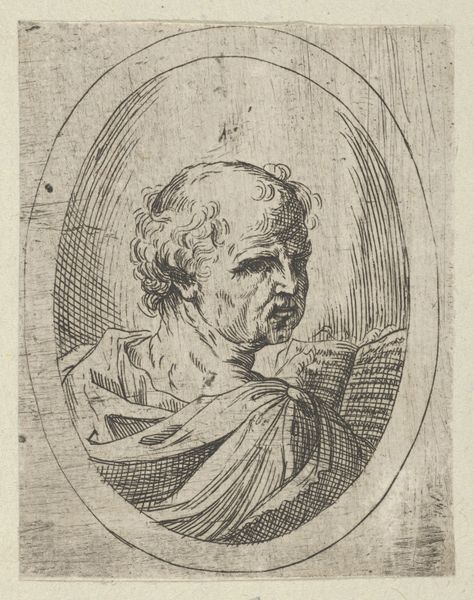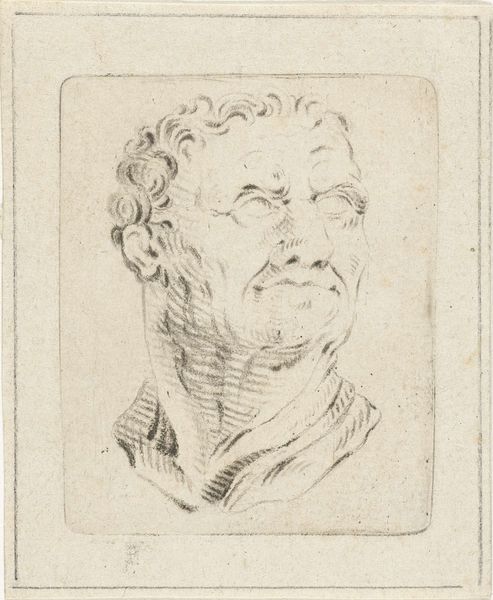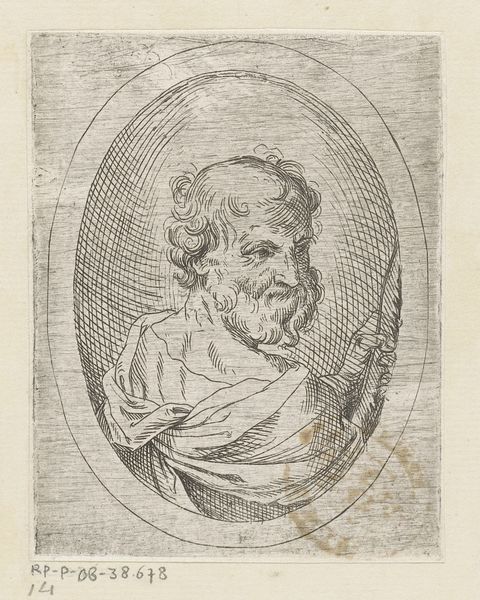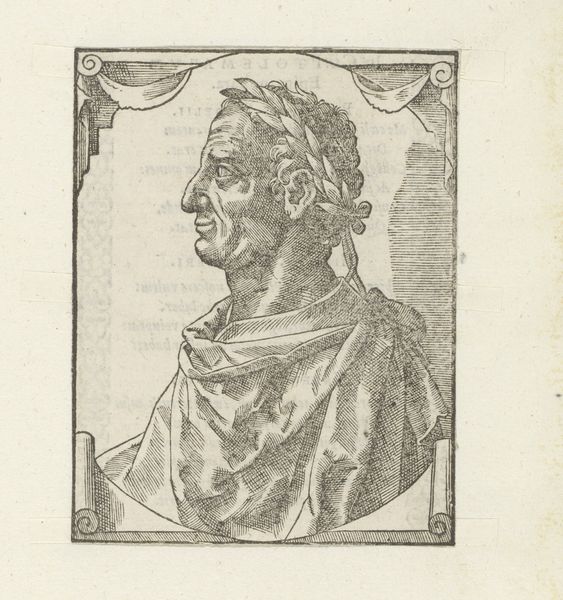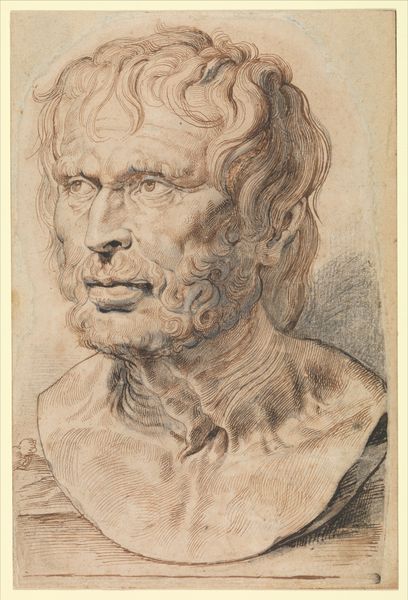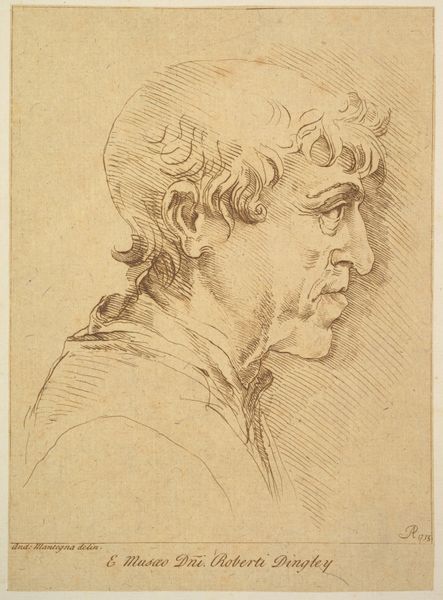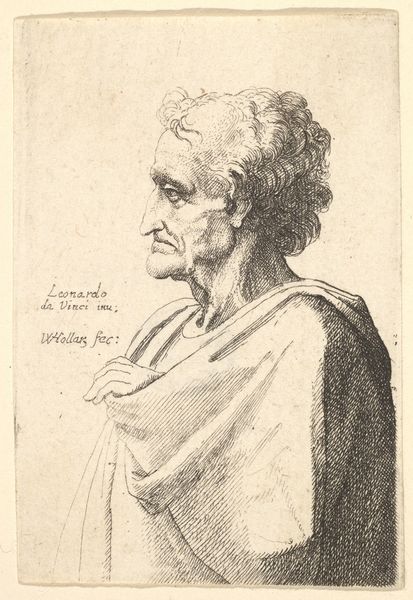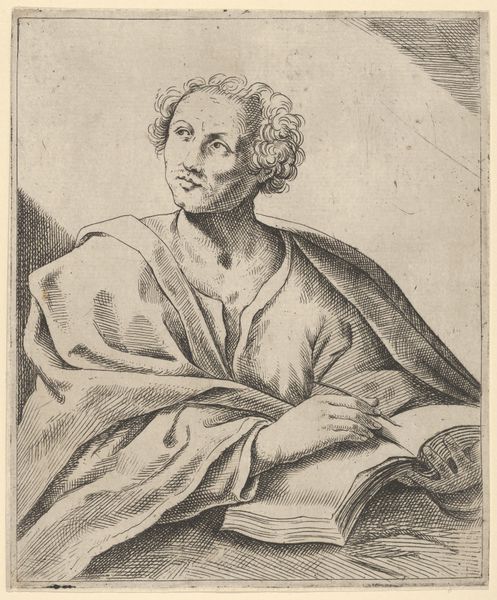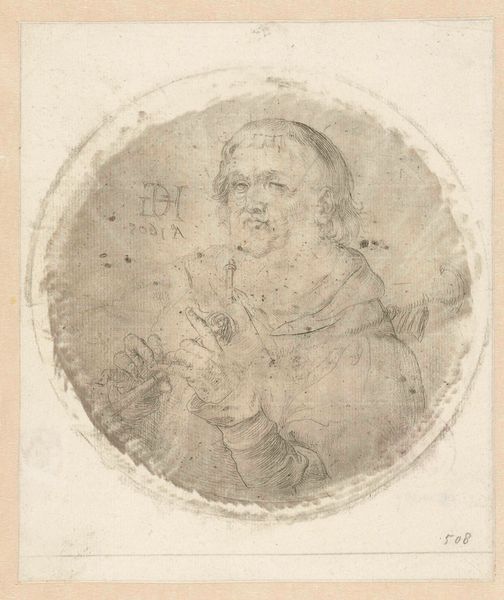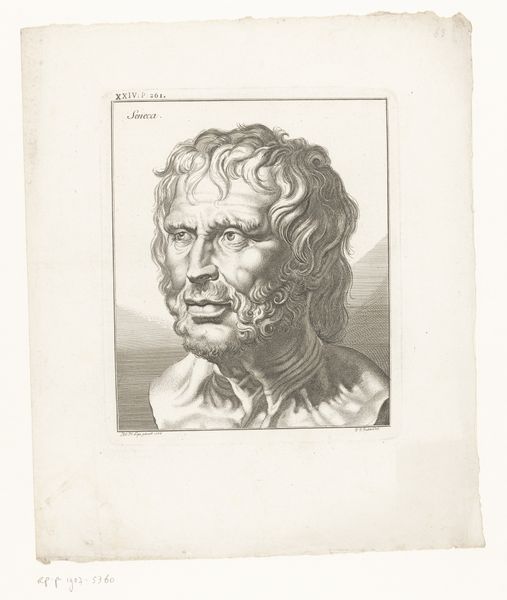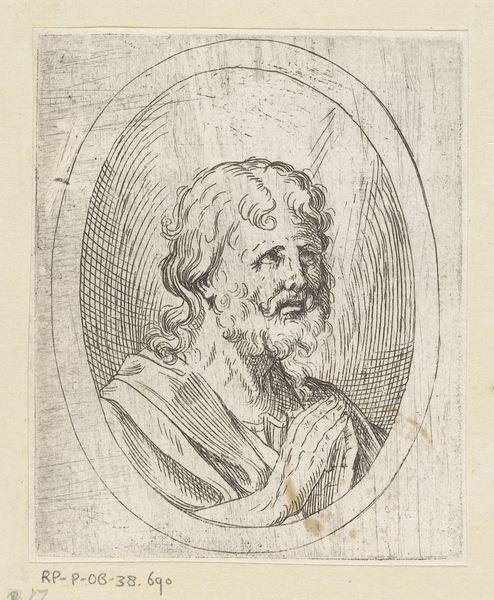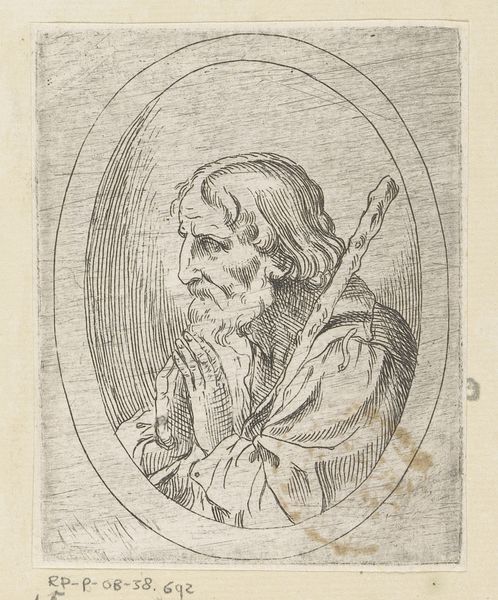
drawing, paper, ink
#
portrait
#
drawing
#
figuration
#
paper
#
ink
#
pencil drawing
#
line
#
realism
Dimensions: height 103 mm, width 87 mm
Copyright: Rijks Museum: Open Domain
Editor: Here we have a drawing, "Buste van een onbekende man," or "Bust of an Unknown Man," created between 1783 and 1850 by Louis Moritz. It’s ink on paper and housed here at the Rijksmuseum. The portrait, made of such humble materials, really grabs your attention. What can you tell us about this piece? Curator: Well, first notice the incredible detail achieved with just ink. The paper itself, its quality, its sourcing—these all contribute to the final product. This wasn’t mass-produced, modern paper; likely it was handmade, from specific fibers. Then look at the marks themselves. Where did Moritz acquire his ink? How was it formulated? What kind of nib was employed? The interplay of labor and material results in this portrait of, intriguingly, an "unknown man". It raises questions of access to representation. Who got their portrait done? And whose stories went unrecorded, unvisualized? Editor: That’s fascinating! I never considered the actual making of the ink itself as a factor. Curator: Think of the time, the skill, the conscious choice to use relatively inexpensive materials to capture a likeness. It suggests a societal need for portraiture reaching beyond the aristocracy. Who commissioned this, and why, matters. Editor: So, it's less about the sitter's identity and more about the means of its creation and what that represents in society? Curator: Precisely! The drawing’s power lies in its material accessibility and the implicit social statement about who and how we depict in art. Editor: That totally reframes how I see it. It's a portrait, but it's also a commentary on the availability of art production itself. Thanks for pointing that out. Curator: Absolutely. Seeing art through the lens of material production provides profound insight.
Comments
No comments
Be the first to comment and join the conversation on the ultimate creative platform.
